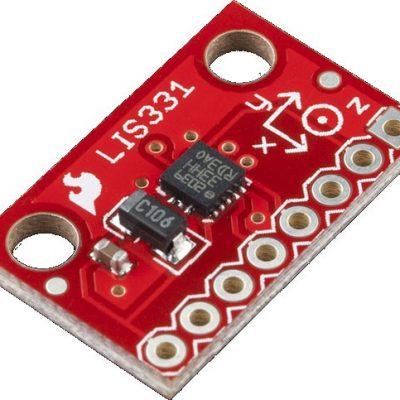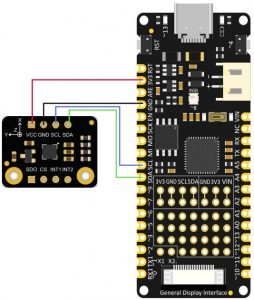LIS331HH
Part Number: LIS331HH
Manufacturer: STMicroelectronics
Description: Accelerometers MEMS Digital Sensor 3-axes Nano
Shipped from: Shenzhen/HK Warehouse
Stock Available: Check with us
ICRFQ.com - Electronic Components Distributor in China Since 2003

Part Number: LIS331HH
Manufacturer: STMicroelectronics
Description: Accelerometers MEMS Digital Sensor 3-axes Nano
Shipped from: Shenzhen/HK Warehouse
Stock Available: Check with us
| Datasheet | |
|---|---|
| Category | Sensors, Transducers |
| Family | Motion Sensors – Accelerometers |
| Manufacturer | STMicroelectronics |
| Series | – |
| Packaging | Tray |
| Part Status | Active |
| Type | Digital |
| Axis | X, Y, Z |
| Acceleration Range | ±6g, 12g, 24g |
| Sensitivity (LSB/g) | 333 (±6g) ~ 83 (±24g) |
| Sensitivity (mV/g) | – |
| Bandwidth | 25Hz ~ 500Hz |
| Output Type | I2C, SPI |
| Voltage – Supply | 2.16 V ~ 3.6 V |
| Features | Adjustable Bandwidth, Selectable Scale, Sleep Mode |
| Operating Temperature | -40°C ~ 85°C (TA) |
| Mounting Type | Surface Mount |
| Package / Case | 16-VFLGA |
| Supplier Device Package | 16-LGA (3×3) |
The LIS331HH is perfect for usage in embedded application contexts because it has a digital I2C/SPI serial interface. All of the primary pins have been divided up into the 0.1″ spacing headers. Additionally, it features two mounting holes that can be utilized.
STMicroelectronics offers an ultra-low-power, full-scale linear accelerometer under the model number LIS331HH. Because it possesses a digital I2C/SPI serial interface, it is ideally suited for use in embedded application environments. Additionally, the gadget keeps ultra-low-power operational modes, enabling improved power-saving functions and innovative sleep-to-wake-up capabilities.
The LIS331HH can measure accelerations with output data rates ranging from 0.5 Hz to 1 kHz. It has user-selectable complete scales of +-6g/+-12g/+-24g dynamically, and the user can choose which of these scales to utilize. The user can check the functionality of the sensor in its intended use by virtue of the sensor’s built-in self-test capabilities.
The LIS331HH can measure up to a difference of 24g along each of its three axes! If that does not satisfy your needs, the H3LIS331 course will undoubtedly meet all of your requirements.
The H3LIS331 can measure accelerations up to 400g, albeit at the reasonable cost of some signal noise at lower “human level” accelerations. In addition to their significant measurement capability, the LIS331s come equipped with high-pass and low-pass filters that are both built-in and configurable. These filters allow you to tailor the readings to your specific application.
SPI and I2C interfaces provide them the versatility to allow them to be utilized in various applications, and adjustable data rates let you vary how frequently measurements are taken depending on your power budget. Additionally, you can adjust how frequently measurements are taken based on your power budget.

A power of 3V is needed to operate the sensor on the breakout. We threw a 3.3V regulator on the board because many of our clients use 5V microcontrollers like Arduino. Due to its extremely low dropout, it can be powered anywhere between 3.3V and 5V without any problems.
Level shifting circuitry makes all the pins entering the breakout safe for 3-5V logic levels. Use whatever level of reasoning Vin has!
If you want to connect more than one LIS331 to the same microcontroller, you must ensure that they share the SDO, SDI, and SCK pins. After that, give each one its own individual CS pin.
You have successfully read this article, and I applaud you. We certainly do wish that you have gained some knowledge today. Put your thoughts down in the comments, and I’ll respond.
Contact us at ICRFQ if you need assistance sourcing LIS331HH or any other electrical component. You can trust us because we are China’s leading distributor of electronic components.
WhatsApp us